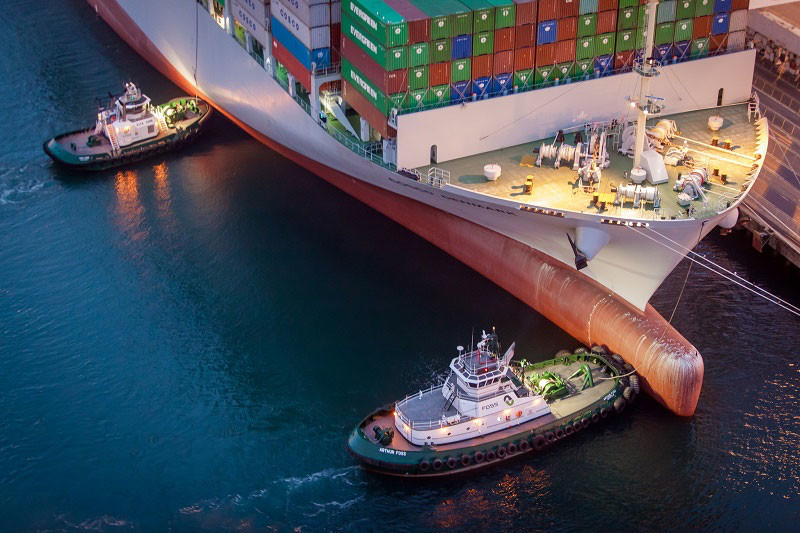A new Biden administration report on the clogged supply chain that has caused persistent ship backlogs at U.S. ports and rising prices for consumers has recommended that further investments in the inland waterway system will help ease congestion.
Funding the modernization of the nation’s aging lock and dam system on the inland waterways, which often move cargo that arrives at U.S. ports, is one of 60 recommendations in the report. The report lays out vulnerabilities in the freight and logistics supply chain and suggests actions that can be taken by Washington, state governments and private companies to “speed up the movement of goods from ships to shelves.”
Specifically, it recommends investing in the inland waterway system “to enhance its performance and capacity.” No project priorities are listed, leaving that to the Army Corps of Engineers, which operates and manages the inland system, and no budget for improvements is suggested.
The Department of Transportation said that the report’s recommendations build on actions already taken by the administration that include passing the Bipartisan Infrastructure Law which makes the largest investment in ports in U.S. history. Recently, the DOT announced the availability of $450 million in grants for U.S. ports under that new law — the largest ever federal investment to improve aging infrastructure at ports which has contributed to supply chain delays and disruptions. The money will be used to build new berths, restore docks and extend rail lines, among other projects.
DOT said there have been other actions already taken to relieve the chaos at U.S. ports, including new “pop-up” sites at the ports of Oakland, Calif., and Savannah, Ga., to reduce congestion.
In Oakland this involves using temporary container yards to make it easier for agricultural companies to fill empty shipping containers and export their goods, while in Savannah four pop-up inland ports are in place to ease congestion of waiting containerships. Meanwhile the ports of Los Angeles and Long Beach are imposing fees on ocean carriers that leave their containers at the ports for too long, and the ports are moving toward a 24/7 supply chain system to relieve bottlenecks.
Some of the other proposals in the DOT report concerning maritime shipping would study methods to increase domestic shipbuilding and the number of U.S.-flagged ships, increase U.S. authority to regulate ocean shipping, increase domestic manufacturing of equipment and cranes used at ports, and speed the approval process for the Transportation Worker Identification Credential (TWIC).
The international supply chain is a highly intricate and interconnected system that underlies the sourcing, manufacturing, transportation and sale of goods used in our daily lives. Supply chain problems worsened during the pandemic as consumer buying habits shifted and demand for foreign goods skyrocketed at a time when businesses were laying off workers, domestic manufacturing was cutback or shuttered, and Covid sidelined many working in the trucking and port sectors. Port congestion remains at an all-time high and is predicted to last through this year and into 2023.




